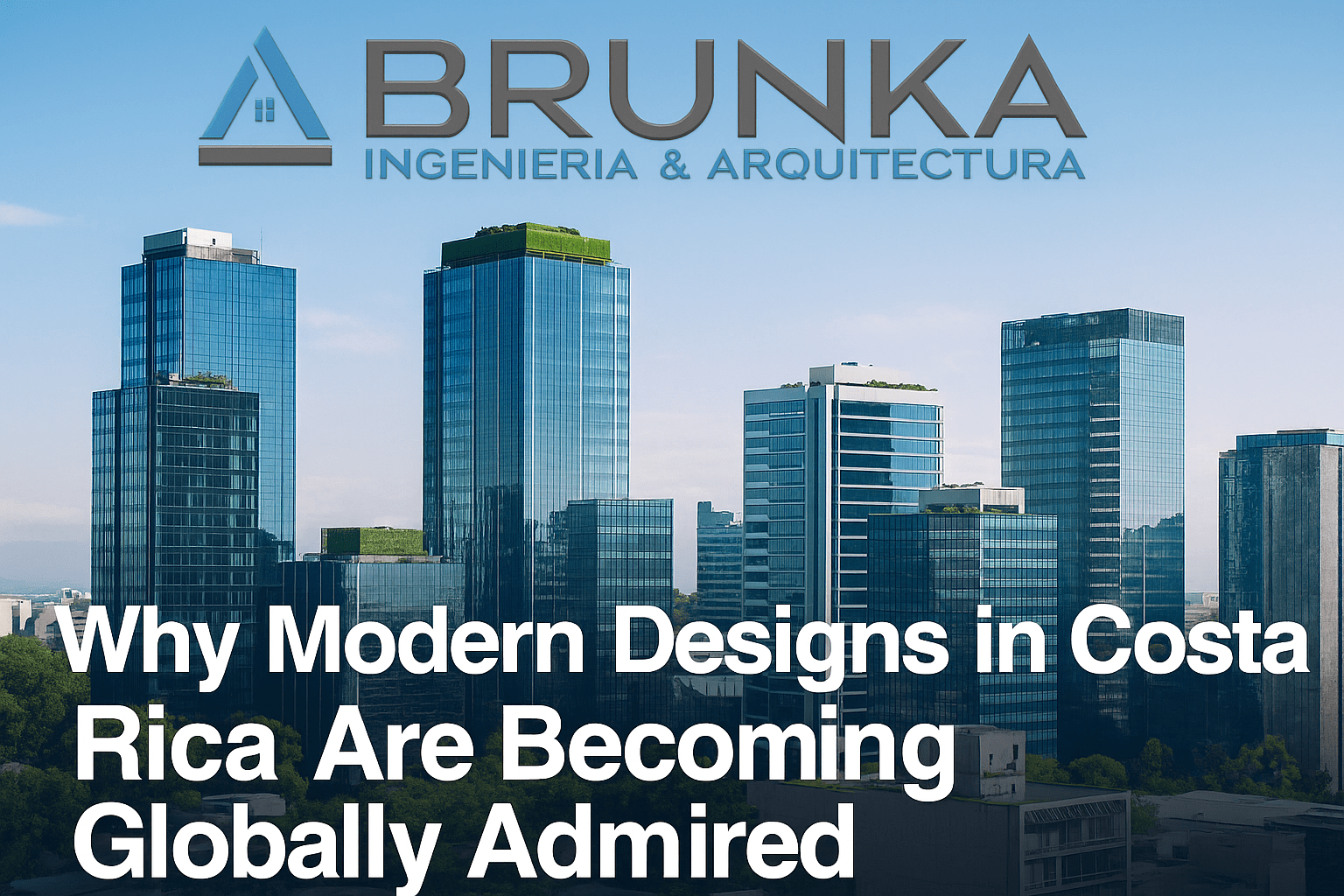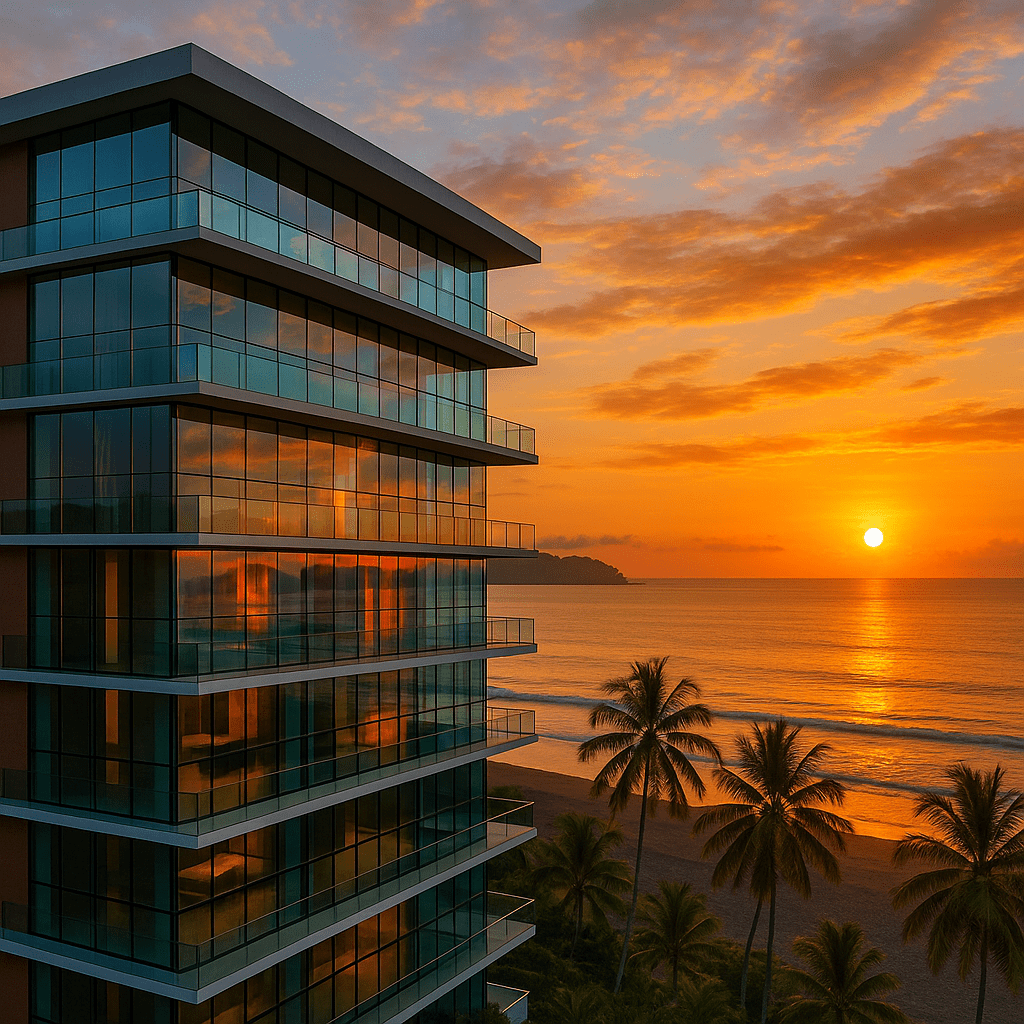
Why Modern Designs in Costa Rica Are Becoming Globally Admired
Quick Summary
- Costa Rica is redefining modern architecture with eco-friendly innovation.
- Designs in San José, Guanacaste, and Jacó are blending sustainability with luxury.
- Developers are integrating global certifications like LEED and EDGE into projects.
- Modern Costa Rican design balances tropical nature with sleek, functional spaces.
- Here’s why the world is watching Costa Rica’s architectural evolution.
Modern Architecture Meets Nature in Costa Rica
Costa Rica has long been celebrated as one of the world’s most biodiverse nations, home to lush rainforests, pristine beaches, and protected natural reserves. Yet today, it is gaining international recognition for something equally inspiring: modern architecture that exists in harmony with its environment. Instead of imposing rigid concrete structures, architects in Costa Rica are reimagining design with open layouts, natural ventilation, and materials that respond to the tropical climate. Glass facades capture sweeping views of the Pacific and Caribbean coasts, while green rooftops and solar systems reduce the ecological footprint. Unlike in many regions where modern architecture feels disconnected from its surroundings, Costa Rica’s approach proves that innovation and sustainability can coexist. By blending cutting-edge design with ecological balance, the country is not just building for today—it’s setting a precedent that positions Costa Rica as a global trendsetter in sustainable modernism.
Fresh data points (2024–2025):
• In 2023 Costa Rica’s grid supplied ~95% renewable electricity, rebounding after drought-driven thermal spikes in early 2024 (under 10% thermal by July 2024). Source: Climate Action Tracker — Costa Rica (https://climateactiontracker.org/countries/costa-rica/).
• Transport accounts for ~75% of Costa Rica’s energy-related CO₂ emissions (2022), underscoring why low-carbon buildings and electrified mobility matter. Source: IEA — Costa Rica emissions (https://www.iea.org/countries/costa-rica/emissions).
1. San José — Smart Urban Modernism
San José, Costa Rica’s bustling capital, has transformed into a hub for smart urban modernism, where sleek design meets sustainability. The city’s skyline is evolving with glass-clad towers, green rooftops, and co-working hubs that prioritize both functionality and environmental impact. A standout example is the Torres Paseo Colón project, which integrates solar glass facades, rainwater harvesting, and energy-efficient systems to achieve LEED certification. These innovations not only reduce energy costs by 28%, but also make the development more attractive to international investors seeking eco-conscious opportunities in Latin America’s growing real estate market.
See more about LEED certification in Costa Rica.
2. Guanacaste — Luxury Villas With Eco-Minimalism
In Guanacaste, modern design trends focus on eco-minimalism — a fusion of tropical simplicity and high-end finishes. Architects are embracing open floor plans, natural ventilation, and expansive terraces that minimize energy use while maximizing comfort. Luxury villas near Tamarindo and Papagayo are built with cross-ventilation systems, bamboo framing, and solar-integrated roofs that work in harmony with the hot, dry climate. One EDGE-certified villa project cut cooling demand by 40%, significantly reducing long-term operational costs. This approach appeals not only to sustainability-minded buyers but also to global investors looking for luxury homes that align with eco-conscious lifestyles.
Explore IFC EDGE certification for sustainable building efficiency.
3. Jacó — Beachfront Modern Living
Jacó has evolved into a showcase for modern beachfront living, where sustainable construction materials meet sleek design. Developers here face challenges like salty air, humidity, and high energy demand — yet modern solutions are overcoming them. One prominent condominium project along Jacó’s coast integrated solar glass facades and recycled concrete, generating 20% of its own electricity while maintaining resilience against the coastal climate. These innovations not only lower operational costs but also attract global buyers impressed by properties that combine tropical beauty with sustainable technology. As a result, Jacó is becoming a reference point for eco-luxury developments across Central America.

Learn more on ArchDaily: Sustainable Coastal Architecture.
4. Monteverde — Eco-Modern Retreats
Monteverde’s lush cloud forests have inspired a new wave of eco-modern retreats, where architecture blends natural materials with cutting-edge design. Boutique eco-hotels and retreat centers are incorporating cross-laminated timber (CLT), large glass facades, and renewable energy systems to minimize their footprint. One LEED Gold-certified hotel project in Monteverde used modular CLT structures, reducing construction time by 35% while enhancing seismic safety — critical in Costa Rica’s earthquake-prone zones. Guests experience modern comfort while being immersed in nature, proving that architecture here is as much about experience as sustainability. These retreats are attracting eco-tourists and international recognition for Costa Rica’s leadership in green hospitality.
Read more about CLT innovation at MIT Sustainability.
5. Why the World Is Watching
Costa Rica’s designs are admired globally because they combine:
- Sustainability: Certified by LEED, EDGE, and CSC (local certification).
- Aesthetic Innovation: Minimalist forms with tropical integration.
- Practical Benefits: Reduced energy demand and lower long-term maintenance.
- Cultural Identity: Designs highlight Costa Rica’s eco-first values.
This approach is drawing attention from international investors, real estate developers, and even architectural schools studying Costa Rica as a model of sustainable modernism.
Future Outlook: What’s Next for Costa Rica’s Modern Design
Looking ahead, Costa Rica is positioned to become a global hub for sustainable modern architecture. With continued investment in renewable energy, eco-certifications, and design education, the country is well on its way to setting international benchmarks. Urban centers like San José are likely to expand smart city projects, while coastal regions such as Jacó and Guanacaste may pioneer climate-resilient, net-zero communities. Monteverde and other eco-tourism areas will continue blending hospitality with low-impact design. As global demand for green, aesthetic, and culturally rooted projects grows, Costa Rica’s architectural identity will only gain stronger international recognition.
FAQs
Q1: Why are modern designs in Costa Rica admired worldwide?
Costa Rica’s designs merge sustainability, tropical aesthetics, and global certifications like LEED and EDGE, making them stand out internationally.
Q2: Which areas of Costa Rica highlight modern architecture the most?
Regions like San José, Guanacaste, Jacó, and Monteverde showcase projects that balance eco-consciousness with contemporary style.
Q3: Are Costa Rica’s modern buildings truly eco-friendly?
Yes. Many projects incorporate solar glass, bamboo, CLT, and recycled concrete, while meeting certifications that ensure energy efficiency and low emissions.
Q4: Do modern designs in Costa Rica increase property value?
Absolutely. Certified green buildings often reduce long-term maintenance costs and attract global investors, boosting both resale value and demand.
Q5: Can international investors participate in Costa Rica’s modern architecture projects?
Yes. Many coastal villas, urban towers, and eco-retreats are designed to attract foreign investment, making Costa Rica a hotspot for sustainable real estate.
Conclusion
Costa Rica’s modern designs are admired globally because they reflect a perfect harmony: eco-conscious values, innovative aesthetics, and global standards of quality. From San José’s urban towers to Guanacaste’s villas and Jacó’s beachfront condos, these projects prove that modern architecture doesn’t have to come at nature’s expense. As Costa Rica continues to push boundaries, it’s not just designing buildings — it’s designing the future.If you’re inspired by the possibilities of sustainable modern design in Costa Rica and want expert guidance on your own project, explore our services at Architect Engineer. Let’s shape a smarter, greener future together.



